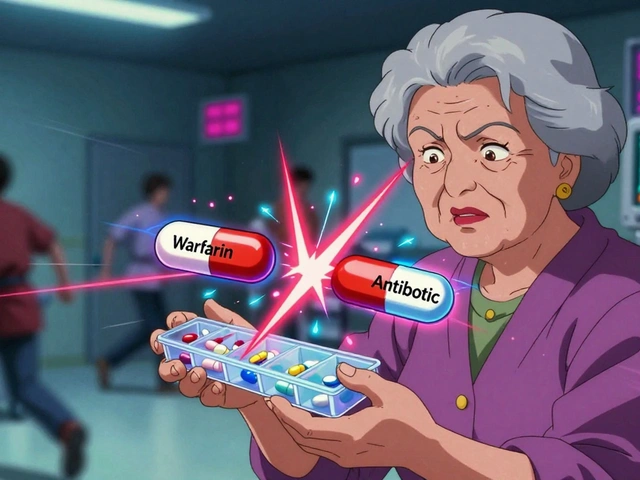Cross-reactivity: what it means for your meds and allergies
Cross-reactivity happens when your immune system or a lab test reacts to one drug because it recognizes something similar in another. That can mean an allergic reaction to a medicine that looks like one you’re already allergic to, or a lab giving a false positive because two chemicals look alike to the test. Knowing the common scenarios helps you avoid surprises and choose safer options.
Common cross-reactivity situations
Beta-lactam antibiotics are the classic example. People often say "penicillin allergy" and then avoid all cephalosporins, but the risk depends on the specific drugs. True cross-reaction is higher with older cephalosporins that share a similar side chain. Many modern cephalosporins are safe for people with mild penicillin reactions, but prior severe reactions need careful evaluation.
Sulfonamide antibiotics (like TMP-SMX) worry people who take non-antibiotic sulfa drugs (some diuretics or diabetes drugs). Most evidence shows allergic cross-reaction between antibiotic and non-antibiotic sulfonamides is uncommon. Still, if you’ve had a severe sulfa allergy, talk to your clinician before taking related drugs.
NSAID reactions are often not true allergies but "pseudoallergies" caused by how these drugs block COX enzymes. If you react to ibuprofen, you might also react to naproxen. COX-2 selective drugs or switching to acetaminophen can help some people, but test changes carefully with medical advice.
Lab cross-reactivity matters too. Some meds and supplements can cause false positives on urine drug screens. Stimulant-like drugs, certain antidepressants, and even some cold medicines can trigger a positive result for amphetamines or other classes. Always tell the lab or your doctor what you take before a test.
Practical steps you can take
First, document your reactions precisely. Note the drug name, what happened, how fast it started, and whether you needed treatment like antihistamines or epinephrine. This makes it easier for a clinician or pharmacist to judge real cross-reactivity risk.
Talk to your pharmacist. They can check chemical structures and suggest safer alternatives or identify likely cross-reactive pairs. If a medication is needed but the allergy is unclear, ask about skin testing or a graded challenge under supervision—these are common for penicillin and help many people safely take important antibiotics.
For lab tests, bring a medication list and mention supplements. If a screening test is positive and doesn’t match your history, ask for a confirmatory test (like GC-MS) before any big decisions are made.
If you’ve had a severe reaction (anaphylaxis), wear medical alert ID and carry an epinephrine auto-injector if advised. For less severe reactions, you can often use alternative drug classes; for example, many blood pressure or diabetes drug alternatives exist and are covered across our guides on metoprolol, warfarin, and other meds.
No single rule fits every drug. When in doubt, stop the new drug and call your provider. Clear records, open communication with your care team, and sensible testing make it much easier to find safe options without giving up effective treatment.





